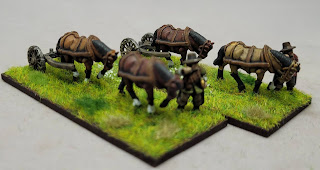Battle of Winwick, 19th August 1648
Update: developers have finally been given the go ahead to build warehouse units on the Parkside Colliery site which covers the Parliamentarian lines on the battlefield. So go and visit before the views of the lines are lost. (On the plus side, the developers have to provide a battlefield trail and signage.)
 |
| Lobster pot helmet on display at Warrington Museum and Art gallery |
As the fighting was almost continuous over the course of three days, Winwick is often described as a continuation of the Battle of Preston.
The now mainly Scottish Army loyal to the Crown formed their lines along Red Bank (which is now the course of Hermitage Green Lane), the steep banks on either side giving an indication why the Scots chose this to boost their defences. Hamilton had taken most of the cavalry to defend the route into Warrington (a vital river crossing over the Mersey) but carried on the retreat into Delamere (ultimately sealing the fate of the bulk of their infantry and the Royalist cause). This would allow the main force to continue south out of Cromwell’s reach and unite with comrades raised in north Wales.
The Scots Royalist Army, now considerably depleted, that took a stand at Winwick consisted of mainly infantry and some small artillery pieces (frame guns).
 |
| Red Bank (Hermitage Green Lane), roughly the Scot's front line |
 |
| Looking towards the Parliamentarian lines and the main battlefield |
 |
| The site of the rearguard action, as the Scots retreated towards the church |
The Scots were forced back to 'that little Greene place of ground short of Winwick Church and there they [the New Model Army] made a great slaughter of them' (Robinson, 1864). Those who made it to Warrington found no reinforcements. The surrender of the entire infantry force later that day effectively ended the invasion and decided the military outcome of the Second Civil War by rendering impossible any relief of the besieged royalist strongholds.
St Oswald's would be utilised after the Battle as a prison for the captured Scots. These prisoners would be force marched along a very circuitous route to Chester and awaiting ships which would take them to the New World and servile labour, or to Venice for service in galleys.
 |
| St Oswald's Church |
Whilst the battlefield is well preserved there are few routes across the site to walk, those roads in the area are busy or have few available stopping points to view the battlefield.
St Oswald's was damaged by Cromwell's troops who would later be garrisoned in the building, and it was virtually rebuilt by the Victorians, with only a few remnants of the 13th Century original church remaining.
 |
| Medieval pig or cow? |
There are no memorials to the Battle, or the slain, present.
In Warrington itself is Warrington Museum and Art Gallery which has a number of artefacts from the Battle on display.
 |
| A rare surviving example of a musket rest fork |
 |
| The smaller shot visible is believed to be from Scots frame guns |
Church Street in Warrington is reputedly where Cromwell had a sleepover.
One of only four statues of Oliver Cromwell in the country, Warrington's statue looks over the River Mersey at the end of Bridge Street.
 |
| No cheating! All four Cromwell statues feature in ECWtravelogue posts - can you find them? No prizes I'm afraid, just a smug feeling of superiority |
Postcodes for SatNavs
Eastern end of hermitage Green Lane WA2 8SN
Western end of Hermitage Green Lane WS12 8DU
St Oswald's Church WA2 8SZ
Warrington Museum and Art Gallery WA1 1JB
90 Church Street, Warrington WA1 2TF
Cromwell Statue, Bridge Street WA1 2HS
If you enjoyed reading this, or any of the other posts, please consider supporting the blog.
Thanks.














The verdigris of the musket rest suggest I should be painting them bronze/brass coloured instead of polished iron/steel. Ah wel...
ReplyDeleteCould just be the lighting, I had thought it was blackened iron.
DeleteBut hey, it's the seventeenth century, diarists didn't record such incidental facts, so we can paint them however we want!